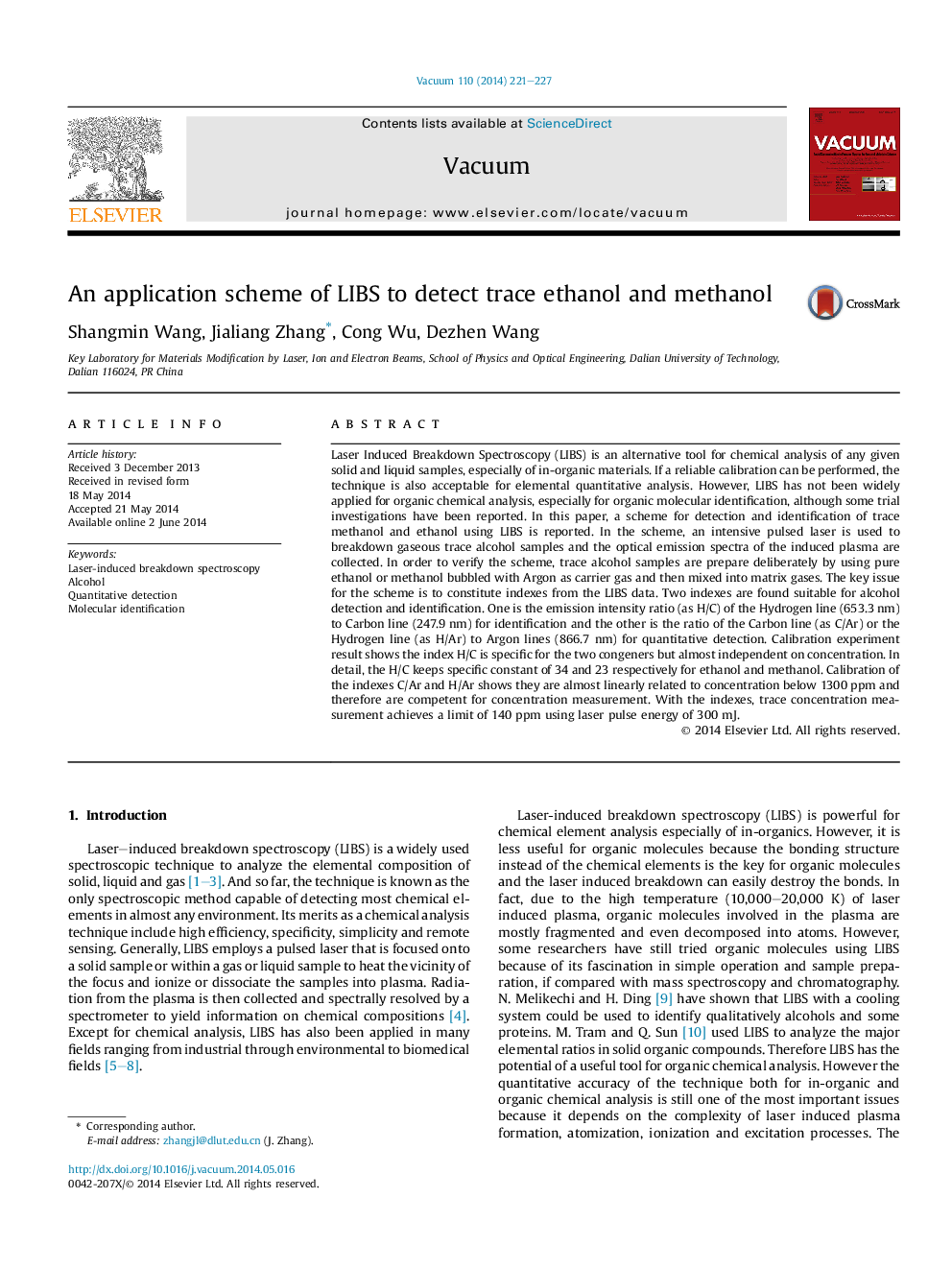| Article ID | Journal | Published Year | Pages | File Type |
|---|---|---|---|---|
| 1689561 | Vacuum | 2014 | 7 Pages |
•An LIBS setup with a close room is built for trace alcohol congener detection.•Spectral intensity ratios of C and H lines in LIBS are suitable indexes for alcohol detection.•Calibration of the LIBS scheme is performed for methanol and ethanol detection.
Laser Induced Breakdown Spectroscopy (LIBS) is an alternative tool for chemical analysis of any given solid and liquid samples, especially of in-organic materials. If a reliable calibration can be performed, the technique is also acceptable for elemental quantitative analysis. However, LIBS has not been widely applied for organic chemical analysis, especially for organic molecular identification, although some trial investigations have been reported. In this paper, a scheme for detection and identification of trace methanol and ethanol using LIBS is reported. In the scheme, an intensive pulsed laser is used to breakdown gaseous trace alcohol samples and the optical emission spectra of the induced plasma are collected. In order to verify the scheme, trace alcohol samples are prepare deliberately by using pure ethanol or methanol bubbled with Argon as carrier gas and then mixed into matrix gases. The key issue for the scheme is to constitute indexes from the LIBS data. Two indexes are found suitable for alcohol detection and identification. One is the emission intensity ratio (as H/C) of the Hydrogen line (653.3 nm) to Carbon line (247.9 nm) for identification and the other is the ratio of the Carbon line (as C/Ar) or the Hydrogen line (as H/Ar) to Argon lines (866.7 nm) for quantitative detection. Calibration experiment result shows the index H/C is specific for the two congeners but almost independent on concentration. In detail, the H/C keeps specific constant of 34 and 23 respectively for ethanol and methanol. Calibration of the indexes C/Ar and H/Ar shows they are almost linearly related to concentration below 1300 ppm and therefore are competent for concentration measurement. With the indexes, trace concentration measurement achieves a limit of 140 ppm using laser pulse energy of 300 mJ.
